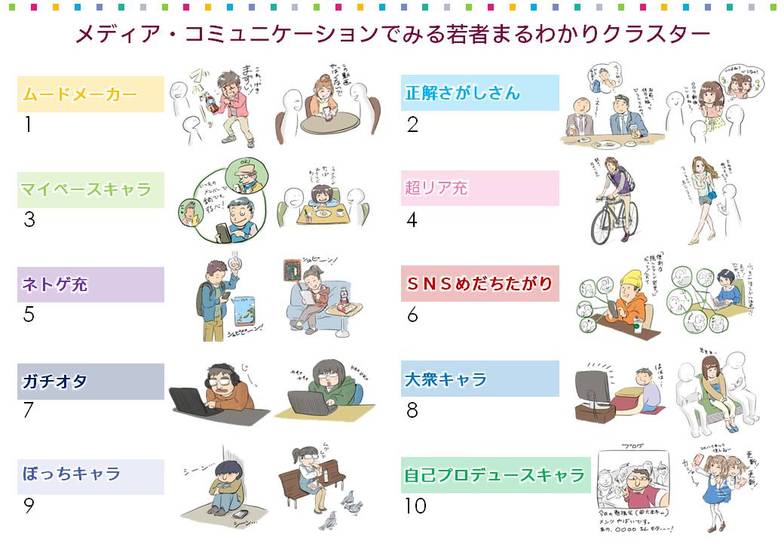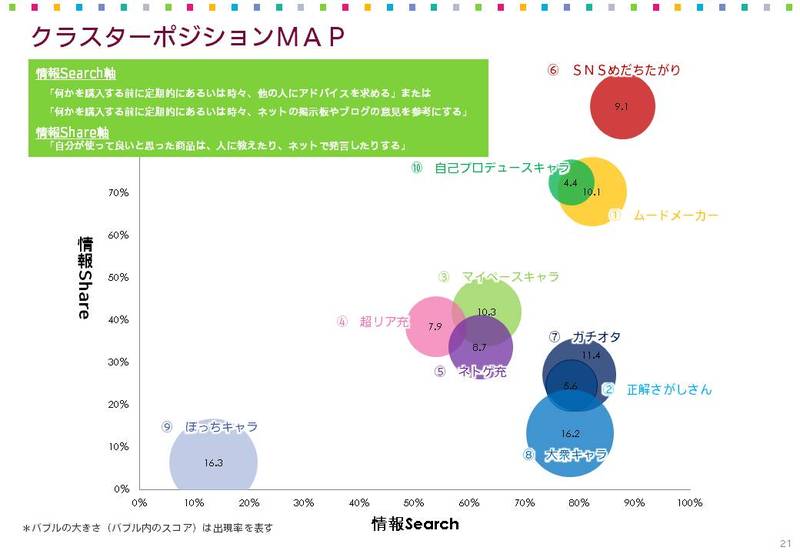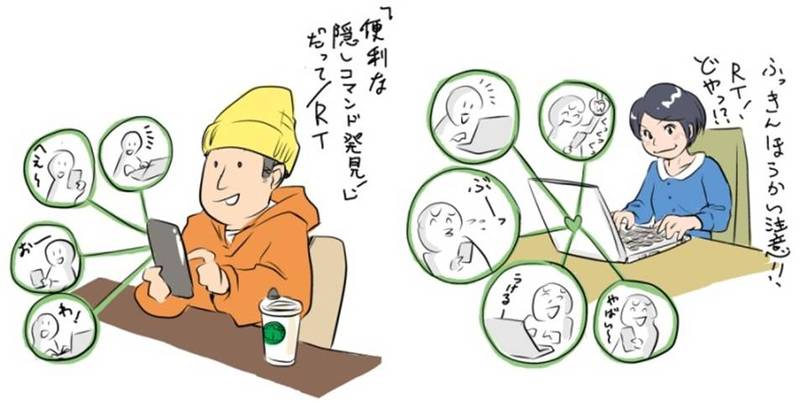
"SNS attention seekers," "self-produced characters"—do you know any young people like this?
At Dentsu Inc. Wakamon, we engage daily with young people, exploring their actual lives through qualitative approaches while also conducting various quantitative research and analysis.
Information transmission media are rapidly developing and diversifying, and the styles of content communication accompanying this trend are also becoming more varied. Among teens and young adults in their 20s, who have grown up accepting this as the norm, we suspect information and communication behaviors are emerging that cannot be fully captured by the traditional "influencer-to-follower" information transmission structure alone.
This time, in collaboration with DENTSU SOKEN INC. Media Innovation Lab, we conducted cluster analysis based on survey data from young people aged 15 to 29. The analysis considered factors such as media exposure and internet search behaviors (information contact/search actions), information sharing/dissemination actions via word-of-mouth and SNS, and other lifestyle attitudes.
As a result, this analysis identified ten distinct types. Examining these reveals the "communication styles" and "structures" of today's youth. Here, we introduce some of these findings.
Ten Distinct Types of Wakamon Seen Through Media Communication
Before the widespread adoption of the internet and SNS, the spread of information among young people primarily followed an offline "influencer-to-follower" structure. To illustrate this clearly using a school class analogy: the popular, highly attuned student would share information gained from mass media or their own experiences in daily life. Their classmates would listen and spread it further, and then the classmates of those would pass it on, allowing it to spread throughout the entire community. However, with the widespread adoption of smartphones and SNS, the communication environment has drastically changed, and the information transmission structure has also evolved. Within this new environment, various types of young people have emerged.
The diagram below lists the 10 clusters we identified this time. Do you think, "Oh yeah, I know someone like that"?

Using the earlier school class analogy, we see relationships like this: the "super popular kid" as the class favorite; the "mood maker" who energizes and spreads topics; surrounding them, the "approval seeker" who seems highly attuned to information and has many friends but has strong validation needs; the "my-pace character" who shares information within their small circle of friends; and further, the "mass character" as a follower-type presence.
Beyond these, there are also distinctive types like the "Online Game Enthusiast" who loves social games, the "Hardcore Otaku" who tends to withdraw into the online world, and the "Loner Character" who shows little interest in anything.
(We'll touch on "SNS attention seekers" and "self-promoters"—key topics in this analysis—later.)
To grasp the characteristics of these clusters more three-dimensionally, we mapped them from two perspectives: information search behavior and sharing/posting behavior. The chart below positions each cluster based on their scores: [Information Search] (horizontal axis) represents search behavior, defined as "regularly or occasionally seeking advice from others before making a purchase" or "referencing opinions from online forums or blogs." [Information Share] (vertical axis) represents sharing/posting behavior, defined as "telling others about or posting online about products they personally found good."

The "Super Social Butterfly" type, akin to the class popular kid, doesn't have particularly high scores in either Information Search or Information Share. This type has established their own sources of information and sense of style. They aren't swayed by social media or word-of-mouth trends, and they themselves don't share much. Instead, others naturally follow them.
*Illustration based on data characteristics

Super Social Butterfly
The type that actively shares information with others is the "Mood Maker." This type excels at face-to-face communication, reads the room well, and has many friends. Their defining trait is a "real-life focus." They prefer finding topics through their own efforts rather than searching online, and meeting in person to talk over posting on social media. They might be the type to say, "Isn't social media just a hassle?"

Mood Maker
When thinking about how young people communicate these days, the image of information sharing via SNS like LINE, Twitter, or Facebook often comes first. However, types who value this kind of real communication and actual experiences still exist.
The "SNS Show-Off" Petit Curator Type
The "Self-Produced Character" Who Wants to Be the Media
Meanwhile, this analysis has visualized two distinctive types within the current communication landscape. The "SNS Spotlight Seeker" excels at gathering information from the web and sharing it with others, enjoying the act of information dissemination itself. The "Self-Produced Character" actively shares information and engages in self-branding-conscious actions through blogs and SNS.

SNS Spotlight Seekers

Self-Produced Characters
These two types are active both in searching for and sharing information. They skillfully utilize the internet and SNS, not only managing information well but also crafting their persona. They are types unique to today's youth. Next time, focusing on these two types, I'd like to introduce the "key points" for approaching each type.
Which type do the young people around you fall into?
(Column: Makoto Ogi / Illustration: Yosuke Kojima)
〈Analysis Overview〉
Factor analysis and cluster analysis were conducted based on d-camp data.
Data Used: d-camp2012 (Survey Period: October 2012 - July 2013)
Survey Area: Kanto region (Tokyo and 6 prefectures)
Analysis Subjects: Males and females aged 15 to 29 (excluding junior high school students) (1163 subjects)
Survey Method: Mail-in questionnaire
Survey Implementation Agency: Dentsu Macromill Insight, Inc.

【Wakamon Profile】
Dentsu Inc. Youth Research Department (commonly known as Wakamon) is a planning team that engages with the real lives and mindsets of young people, primarily high school and university students. By understanding their "present," we seek hints to brighten and invigorate the near future. We foresee the future based on their insights and realize new businesses that foster better relationships between young people and society. Currently, 14 project members are based across the Tokyo headquarters, Kansai branch, and Chubu branch. Information is also shared on the Wakamon Facebook page ( https://www.facebook.com/wakamon.dentsu ).










